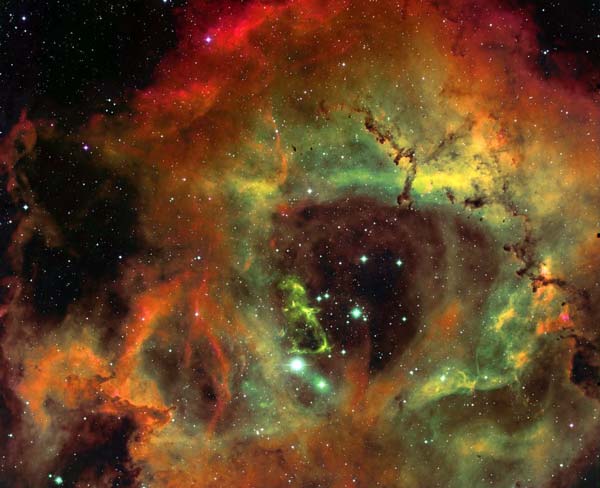Interstellar Gas, Dust and Nebula
The Interstellar Medium (ISM)
The material between the stars is known as the interstellar medium. Approximately 99% of the mass of the interstellar medium is in the form of gas with
the remainder primarily in dust. Of the gas in the Milky Way, 90% by mass is hydrogen, with the remainder
mostly helium.
The gas appears primarily in two forms
- Cold clouds of atomic or molecular hydrogen
- Hot ionized hydrogen near hot young stars
Interstellar extinction and reddening:
The galaxy is a rather dusty place, and this dust partially blocks star light. This is known as extinction. Moreover, blue light is blocked more than red light. Thus a blue star, after its light passes through the interstellar dust, will come out looking red (kind of like the red sun on the sunset). This is known as reddening.
Dark Nebula:
The dark nebulae (sometimes called Bok Globules) are clumps or clouds that become opaque because of their internal dust grains. The form of such dark clouds is very irregular: they have no clearly defined outer boundaries and sometimes take on convoluted serpentine shapes. The largest dark nebulae are visible to the naked eye, appearing as dark patches against the brighter background of the Milky Way.
|

|
Emission Nebula:
The HII regions (emission nebulae) are composed mostly of a plasma of ionized hydrogen (HII) and free electrons, with trace levels of other chemicals. The hydrogen atoms of the interstellar medium are ionized by the ultraviolet radiation from a nearby very hot stars (typically young stars). As the hydrogen ions de-excite to lower energy levels, they emit their characteristic spectral lines. The most prominent of these in the visible spectrum is the red line of hydrogen, giving most emission nebulae a characteristic red glow. Green is from ionized
oxygen, and green is from nitrogen.
|

|
Reflection Nebula:
These nebula are visible because of light from nearby bright stars scattering off of dust particles. The nearby star or stars are not hot enough to cause ionization in the gas of the nebula but are bright enough to give sufficient scattering to make the dust visible. Since wavelengths in the blue are scattered more readily than red, reflection nebula tend to have a blue shading.
|

|
Activity 1


